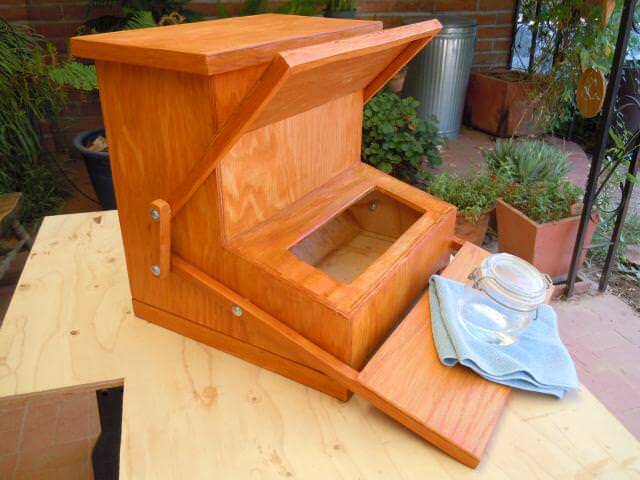A Practical Guide to Keeping Chickens – The Scoop on the Coop
Oh Lardy! is a participant in the Amazon Services LLC Associates Program, an affiliate advertising program designed to provide a means for us to earn fees by linking to Amazon.com and affiliated sites.

When we decided to get chicks 4 years ago, the kids and I picked them out from a local feed store, brought them home to their brooder, and I told my husband he had about 6 weeks to build me a coop. For us, having the chicks in the house and NEEDING a place to eventually put them, properly inspired my husband to get busy building a coop.
You may be in a similar situation yourself. You have your chicks, they are busy peeping and growing feathers. They are getting bigger. And BIGGER. No more procrastinating, you need to get yourself a coop!
What are the Coop Ingredients?
The “coop” is made up of the hen house and the chicken run. If you remember from Chicken 101, the hen house is an enclosed house where the hens roost and lay eggs and the run is a fenced outdoor area where they spend their free time, so to speak. Lots of people put a great amount of detail into planning and building their coops.
Bottom line, a good coop will:
- Have a place for the hens to roost at night
- Have nest boxes for the hens to safely lay their eggs
- Have a place for food and water
- Be easy to clean
- Protect the hens from the elements
- Protect the hens from predators
- Have adequate space for the amount of hens in the flock
- Allow for proper ventilation
Life inside the Coop
So, what are chickens up to all day? They wake up in the morning, hop off their perches and make their way out of the hen house into the chicken run. They will probably grab a bite to eat and drink some water. If your hens are “cooped up” all day and not allowed to roam your yard, they will most likely get busy scratching and pecking and clucking right there in the chicken run. They will visit the nest boxes during the day to lay their eggs. Then, around dusk they will make their way back to the hen house and put themselves to bed for the night. I never have to go grab my chickens to make sure they are in the hen house at night. They are good like that. The next day, they will do it all over again. Because they love it.
How much space do the hens need?
In the hen house (where the hens roost and lay eggs), chickens need no less than 2 square feet per bird. In the run (where they play), hens need no less than 4 square feet per bird. If you have the room, feel free to give your hens as much space as you can. The more space they have in the run, the happier they will be. If hens start to feel crowded, they will get cranky. And when they get cranky they might take it out on their friend by pecking her and they will stop laying eggs. A stressed chicken will not give you eggs. No matter how nice you ask. So, when planning your coop, allow for at least the minimum space needed and if you can allow for more, give it to them! You also might want to take this moment in planning your coop, to stop and think if you might ever want more chickens. Lets say you want 4 hens today, but maybe in a year or two you could see yourself having 8! Plan accordingly so that your new birds will fit right in when the time comes.
Another thing to consider when planning your coop is whether or not you want to be able to walk in it to clean it. I was certain that I did not want to get on my hands and knees to clean out a messy coop. So I made sure there is adequate space for me to be able to walk into the coop and do my cleaning.
Should the coop have a roof? We know that the hen house should be enclosed entirely to provide adequate shelter for the hens. But should the run have a roof, too? By putting a roof over the entire coop, you allow for shade in the run as well as shelter from rain and protection from predators. It is entirely up to you, of course. I opted for a roof.
Climate Considerations
Where your backyard is located in this beautiful world of ours is going to influence your coop planning. If you live somewhere cold, you will need to make sure that your coop is well insulated. You might even run electrical to the hen house so that you can plug in a heat lamp on particularly cold nights. In warm climates (like here in Arizona), the hen house needs to be well ventilated. The run might even have cooling systems in place. In the summer, I set up misters for our girls and set out frozen water bottles for them to sit next to. Some Phoenix chicken owners set up big box fans to keep a steady breeze blowing through the coop. Taking your climate into consideration when planning your coop will ensure that your birds will be comfortable through the seasons.
Where to put the Coop
So, where does it go? Just as in Real Estate, the location of your coop is really important. The first thing you should consider when deciding where to put your coop is your City Code. The code may have certain rules or restrictions regarding how far away the coop must be from neighbors. So, read up on your code and then head out into your backyard to scout for a good location. The ideal place would be somewhere that is away from windows and doors. This place will have adequate shade and good drainage. Also think about how you want to access the coop for both cleaning and egg collection. This can help plan orientation before you break ground.
Start building!
The first thing you may want to consider when building your coop is the foundation. For us, since our hen house is raised up, we just placed our entire coop on the ground. Some of you may have a bigger hen house. You can place it on concrete, you can raise it up off of the ground with blocks. Your location, climate, and design will dictate the best foundation for your hen house.
When enclosing your run, you will need to consider a fencing of some sort. I recommend using hardware cloth to enclose your run. Small birds can hop through chain link and even chicken wire. Small birds like chicken food, too. The hardware cloth is better at keeping other animals (rats, too) out of your coop. You can find hardware cloth at your local home improvement store.
Inside the Coop
Not only do you have the hen house inside the coop, you also have a space for your hens to eat and drink. Originally, we suspended a feeder and a waterer just under the henhouse, to adequately utilize that space. I have since then moved their water out into the yard because they are hardly ever in the coop. I also changed the feeder that you see in the video below to a treadle feeder.
This became necessary because the pigeons found our feed and we also lost a lot of feed to mice and rats. Since switching to this, we don't have a problem with loss of feed. Bottom line, when planning your coop, be sure to find a great place for food and water by either suspending the feeders, or placing them in an ideal spot that works for you and your hens.
Inside the Hen House
When the chickens go to bed at night, they prefer to roost on a perch. Inside your hen house, this perch should be at least 2 feet off of the ground. If you use a dowel or branch of some sort, be sure that it is at least 2 inches in diameter. I did learn that chickens prefer (at least mine do) to roost on something flat, like a 2×4 with rounded edges. Metal and plastic perches do not work well as the hens can't grab on to that well. Allow for about 10 inches of roosting space per bird.
When a hen goes to lay her eggs, she prefers a nice cozy, safe space to do so. Nest boxes are the perfect spot because she will be happy and you will know where to find the eggs. When planning your coop, allow one nest for every 4 hens. We designed our nest boxes to be 14 inches wide, deep, and tall. We also allowed for exterior nests, meaning they don't take up space in the hen house. They stick out the back and allow for egg collection without walking into the coop. When your coop is built, put a golf ball or a plastic egg in your nest boxes. Your girls will learn that when they eventually start laying eggs, that is where they will go.
A while ago I put together a little video of my coop using my FlipCam. While the quality isn't superior, you can get an idea of how things work in our backyard. We don't have a fancy coop, but it keeps the girls dry and safe and they have a place to put their eggs. Mission accomplished!
Get Our E-book!
For everything you need to know about chickens, check out Oh Lardy's Guide to Keeping Backyard Chickens!
Next up: How to Care for your Chickens
In case you missed it: All About Chicks!
Pin it!
Featured on Family Table Tuesday





LOL… that’s how we started with chickens last year. I bought them, kept them in the garage, which forced hubby to FINALLY make me a coop! He made a really nice one, but being the perfectionist that he is, they were overdue for that coop! But thankfully he got it done. That’s one way to get a coop, huh? lol.